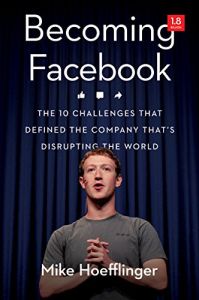Join getAbstract to access the summary!

Join getAbstract to access the summary!
Mike Hoefflinger
Becoming Facebook
The 10 Challenges That Defined the Company That’s Disrupting the World
AMACOM, 2017
What's inside?
What Zuck wrought: a detailed history of Facebook’s founding, growth, development and future challenges.
Recommendation
With more than one billion daily users – 90% using cellphones – Facebook has changed how people communicate. Silicon Valley veteran Mike Hoefflinger discusses Facebook’s ups and downs, beginning with its humble origins in 2004. Facebook has managed to stave off competition from MySpace, Google+ and others, but it has faltered on some internal projects, and it struggles to make inroads in less developed countries. This overview covers Facebook’s mission, explosive growth, acquisitions and future projects. Even though Hoefflinger was once a Facebook employee, his analysis of it seems objective. He does a good job of explaining its successes, struggles and failures. getAbstract recommends his overview to executives, manager, technology employees and Facebook users. You’ll like this detailed report and you may want to become its friend.
Summary
About the Author
Mike Hoefflinger is the entrepreneur-in-residence at XSeed Capital in Silicon Valley. He has worked in Silicon Valley for 25 years, including stints at Intel and Facebook.
















Comment on this summary